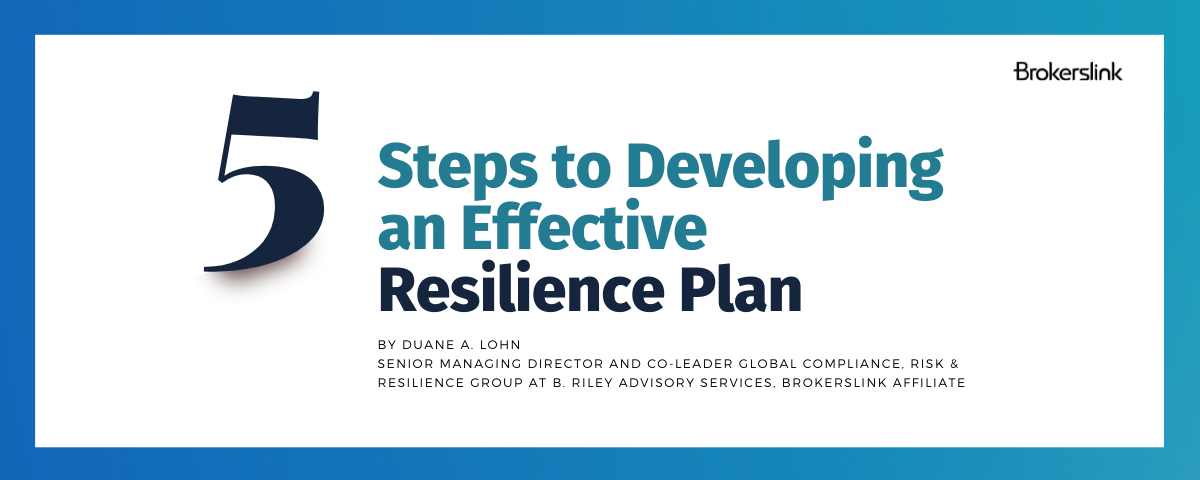
One of the clearest lessons we’ve learned over the past 18 months is that disruptive events must be planned for as a core part of every organization’s long-term strategy.
Brokers can play a key role in helping clients understand the need to elevate their resiliency planning and to make it a strategic priority. To be effective this needs the involvement of senior leadership, board level updates, and regular planning sessions with key staff. Such planning allows an organization to understand its capabilities to fulfil its mission in the event of an unforeseen crisis.
Developing an effective resilience plan should include the following key steps:
1. Assess potential threats: The assessment should involve all levels of the organization and be clearly understood by senior leadership. Careful consideration should be made of the potential impact and duration of each event, including worst-case scenario planning.
2. Identify and prioritize critical functions: Every organization should have a clear understanding of its recovery priorities and the impact of the loss of a function on the organization’s mission. This includes identifying the recovery time objective for each core function and the resources needed to support the restoration of critical activities. Such prioritization allows for the effective direction of limited resources during an operational recovery.
3. Determine options for alternative workflows in the event of disruption: By having a clear understanding of its recovery capabilities, realistic expectations can be set for customers and stakeholders on service delivery. Consideration of options for alternative workflows must include participation from various levels of personnel.
4. Document and communicate the plan of action: Make sure the plan of action and the supporting team roles are clearly communicated. Each team member needs to understand their role in the recovery plan, particularly those involved in key restoration activities. The goal is to minimize the need for improvisation during a crisis event.
5. Critically test the plan and evaluate its actionability: Often overlooked is the critical role of testing and exercise of the plan in the creation of an effective resilience program. A thorough test must challenge the plan and the participants to critically evaluate the assumptions on which the plan is based. Communication plans and alternative workflows should be tested using real world scenarios. The results of the exercise should be thoroughly documented with clear steps for plan improvement.
Resiliency planning can no longer be considered a back-office obligation but must be a core part of every strategic plan and be thoroughly communicated within the organization. The above considerations will provide for a dynamic planning process that is attuned to the priorities and requirements of key stakeholders and customers.





